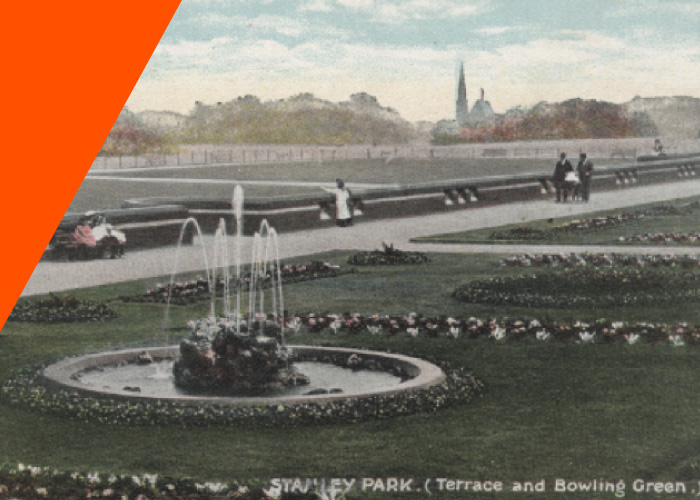Liverpool Parks is presented by SallyAnn Webster from Liverpool Record Office and forms part of the Liverpool Through the Archives series, produced for the Connecting Our Communities project…
Merseyside has an important place in the history of urban parks, with both Liverpool and Birkenhead taking pioneering steps in the first half of the 19thcentury. The motivations of park builders varied, from the classic Victorian desire to create ‘lungs’ for the polluted cities, to the hope that building plots surrounding parks could be sold off at a premium. Liverpool’s ring of parks in the inner suburbs was created at an important point in the city’s development protecting significant areas of land that would otherwise have been used for housing in the late 19thcentury, while the scale and design of Birkenhead Park inspired Central Park in New York.
In the first half of the 20thcentury, parks remained an important element of civic pride, but they suffered badly from reductions in local government funding and rising fear of crime in the 1970s and 1980s. Moving forward with commitment from Liverpool City Council and working together with community groups and local organisations parks provide safe family spaces for all to enjoy.
If you have ever climbed to the top of the Liverpool Anglican Cathedral you will have been amazed at how green our city really is. Liverpool’s parks and open spaces have always played an important part in the social and recreational history of our city. Here is a quick snap shot of how Liverpudlians have made use of their open spaces.
Stanley Park
Stanley Park, 1904 – Showing Terrace and Bowling Green.
Stanley Park covers 110 acres and was opened in 1870. 50-60% of the land consisted of open turfed areas for sport.
Archive Reference: 352 PSP/85/42/8
Greenbank Park
Greenbank Park, 1909
A view showing boats on the lake. In 1897, Liverpool Corporation entered into an agreement with the Rathbone Family to purchase Greenbank Park for the sum of £13,000 and the agreement between the Rathbone family and the corporation required the corporation to maintain this land as open space or recreation ground for the public.
Archive Reference: 352 PSP/85/19/4.
Princes Park
Princes Park, 1943 – View of Princes Park showing Giant Draughts.
Who knew social distancing draughts was a thing?
Archive Reference: 352 PSP/85/29/16.
Sefton Park
Sefton Park, 1954 – View of Sefton Park showing children’s playground.
Sefton Park covers 200 acres and is classified grade 1 listed by English Heritage.
Archive Reference: 352 PSP/85/34/38.
Sources
- Liverpool Archive Prints & Small Photographs Collection
- Liverpool in print reading guides (Archives)






